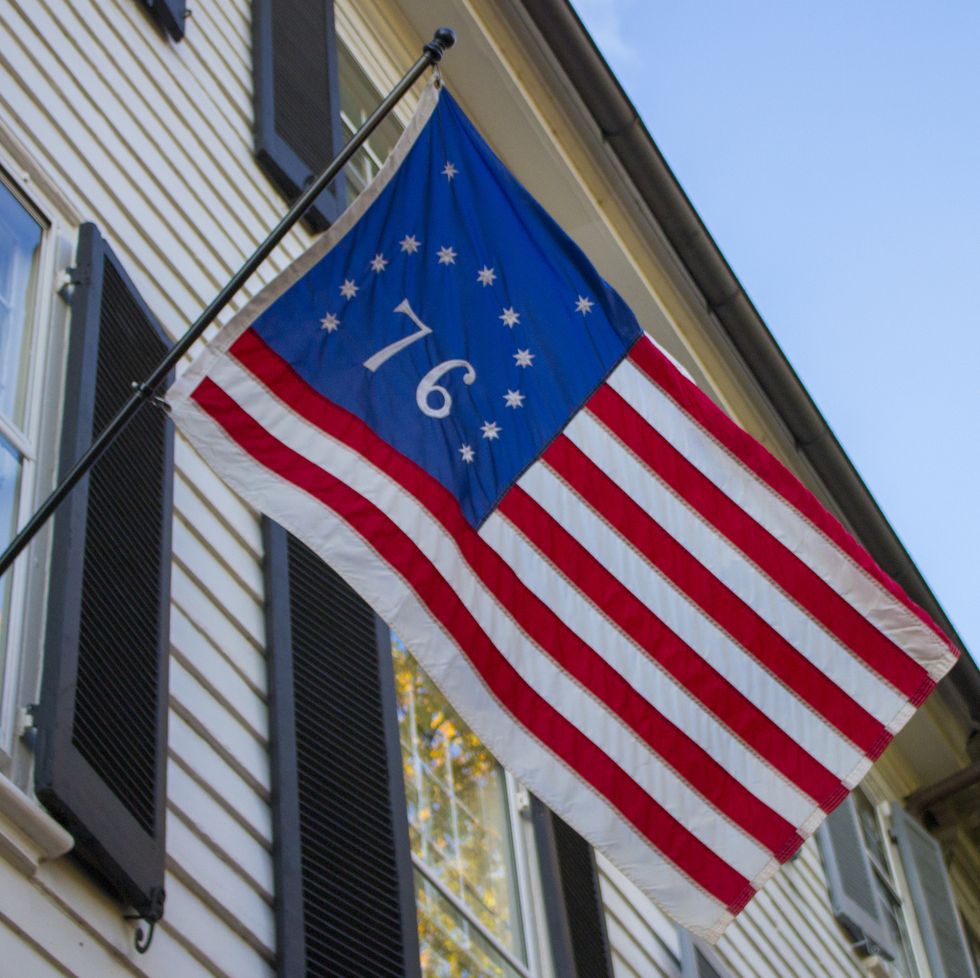The beauty that an American flag exudes is simply unmatched. There's nothing quite like the vibrancy of that red, white, and blue color palette waving high and mighty to represent the country and everything it stands for. Just a quick question, though: do you know how many stars and stripes are on the American flag? It seems a like a question that any citizen would know the answer to, sure, but there's actually more historical significance to it all that's worth learning about. In fact, there are so many fun facts about the American flag that you should probably read up on!
As you prepare to fill your home with patriotic decorations for holidays like Memorial Day, the 4th of July, and Flag Day itself, you might want to get acquainted with the history behind the grand old flag. Here, we'll cover how many stars and stripes are actually on the flag, what they symbolize, and how they came to be—so you can display your flag with pride! Just make sure you brush up on how to properly display the American flag. (And while you're here, read up on your 4th of July trivia, too!)
How many stripes are there on the American Flag?
There are 13 stripes on most American flags you'll see in public! These stripes switch between red and white on every other line, stacked on top of each other in a horizontal pattern. The number 13 represents the 13 original colonies of America: Virginia, Massachusetts, Rhode Island, Connecticut, New Hampshire, New York, New Jersey, Pennsylvania, Delaware, Maryland, North Carolina, South Carolina, and Georgia.
How many stars are on the American flag?
On a standard American flag, there are 50 stars—white in color, all containing 5 points. There are 50 recognized states in America, hence the 50 stars. The stars are inside a blue block on the top left corner of the flag. Again, there isn't an official meaning behind the flag's colors, but PBS states that "blue represents vigilance, perseverance, and justice."
A new star is added to the flag on the 4th of July after a new state becomes officially recognized.
Why are there 7 red stripes and 6 white stripes on the flag?
Good question! While it's known that the 13 stripes represent the original colonies of this nation, the colors bring on a different meaning. There isn't an official reason why red and white were designated as the stripes' pallet, but there are some educated theories. For example, PBS reports that red symbolizes "hardiness and valor" while white symbolizes "purity and innocence." There you have it!
How many past iterations and versions of the American flag are there?
There have been over 27 American flags! To be more specific: These 27 flags ranged from the years 1777 to 1960. (Hawaii was the last state admitted to the United States in 1959, hence 1960 being the flag's most recent update.)
There's also the Bennington Flag, an additional variation inherited through the Fillmore family around the 1800s. There's no confirmed date range, and the origin story has a few conflicting tales. However, the Bennington Flag contains 13 stars and 13 stripes (to represent the colonies). The stars form an arch inside of a blue square at the top left corner of the flag, with the number "76" under it. What's unique about this flag is that the white stripes are on the outer layers.
What is the Betsy Ross flag?
The Betsy Ross flag is allegedly America's first sewn flag (also known as the 13-star U.S. flag and the first U.S. flag). It's said to be put together by Betsy Ross herself (an American upholsterer) in 1777. Though it isn't officially confirmed if Ross was indeed the first person to sew the flag, it has been widely believed to be her since 1870.
Josiah is the Digital Content Producer for the commerce team at Popular Mechanics, Best Products, Runner’s World, and Bicycling Magazine. He also writes for “BIO Buys”—a column on Biography.com—giving readers the lowdown on what products their favorite celebs are using. In another life, Josiah was an editor at ThePioneerWoman.com, where he sharpened his expertise on all things lifestyle, food-news, and entertainment. Outside work related matters, he’s a fan of Studio Ghibli films, unimportant reality TV drama, and melancholy Lorde songs.













